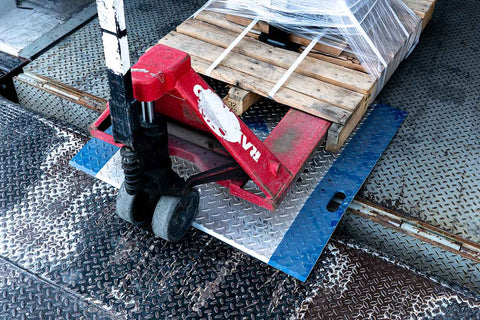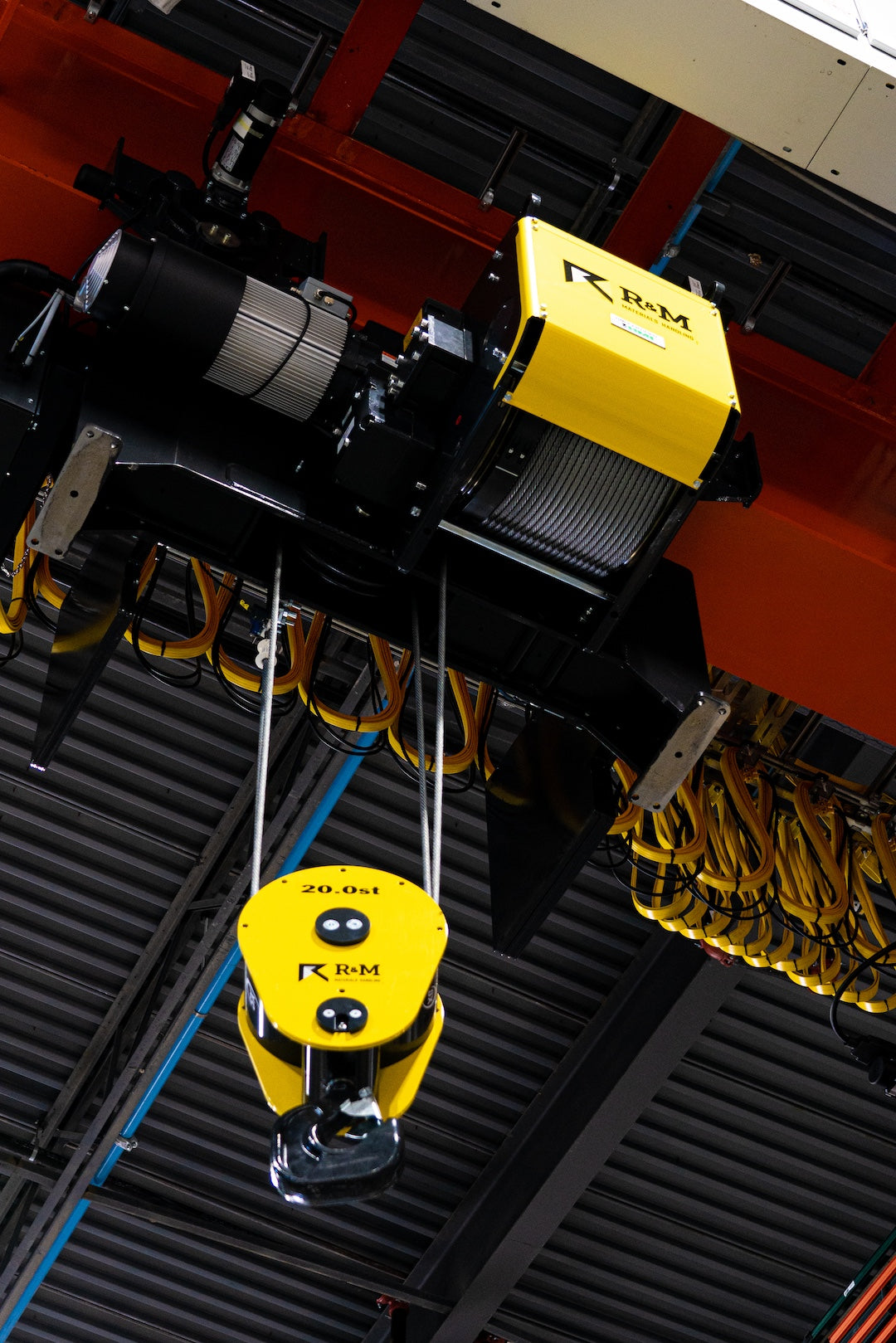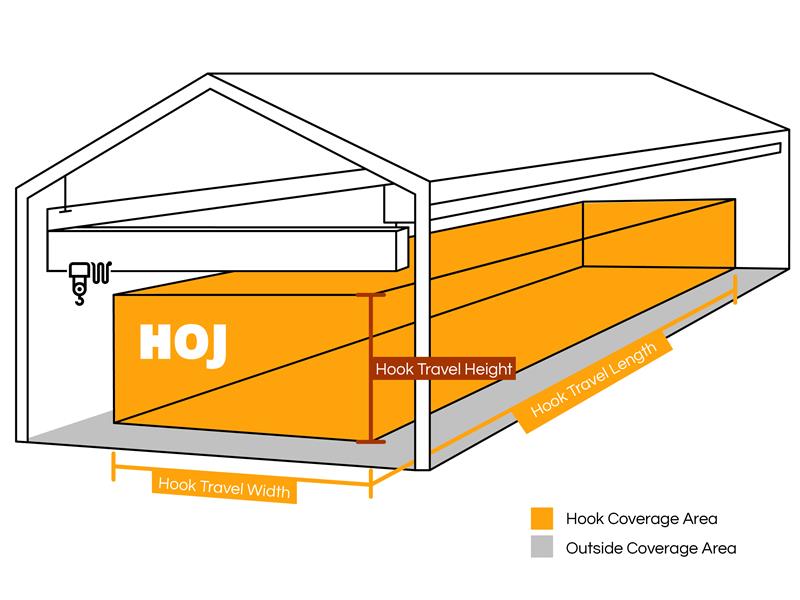Your Cart is Empty

Understanding and Choosing the Right Dock Plate or Dock Board For Your Operation
What are dock plates and dock boards, and why would I want to use one?
If you don’t have a dock leveler and you need a cheap and effective way to move product in and out of delivery trucks, then you will want to have a dock plate or dock board on hand. Both are used to bridge the gap between a truck bed and a dock door, so you can safely transport loads to and from the other.
These plates and boards are metal platforms (usually made of aluminum or steel). In addition to the flat portion of the board or plate, metal legs protrude perpendicularly from the bottom side and fit between the dock and the truck bed for added support and security. Both dock plates and boards are made with surfaces that provide added traction, such as a diamond plate surface, punched hole pattern, or a grit coat. These surfaces add a layer of safety at all times, especially in wet weather.

The main differences between dock plates and boards are their size and weight capacity. Dock plates are generally thinner and smaller and are used for moving loads with a hand truck, platform truck, or pallet jack. They are typically made of aluminum, making them lightweight and easy to move by hand.

Dock boards are heavier duty than dock plates and are meant to be used with equipment with higher weight capacities, such as a forklift. Typically, a forklift is needed to move these as they are quite heavy. Heavy duty dock boards can feature bolted-on or built-in steel curbs that keep forklift wheels from rolling off of the board while in use.

Being able to move in and out of the truck and warehouse seamlessly creates a much faster loading and unloading process. Instead of legs, some heavy-duty steel dock boards have adjustable steel pins to secure the board between a dock and truck.
How do I choose the right dock plate or dock board for my operation?
There are three important components to remember when buying a dock plate or board. They are the height differential, width, and weight capacity.
The height differential is simply the height difference between the truck bed and the loading dock. For example, if the truck bed is 7 inches taller than the dock, then you need a dock plate or board with a 7-inch height differential so you can effectively and safely move loads in and out of the truck and warehouse.
The width of a plate or board should be at least 12 to 18 inches wider than the widest cargo you are moving or vehicle you are using (whichever is wider). This amount of space makes the loading and unloading process easier and safer.
As for the weight capacity of the plate or board, be sure to calculate the weight of the vehicle you will use (such as a forklift or pallet jack) along with the weight of the load that vehicle will carry. This ensures greater safety for those who are using the equipment.
Different Types of Plates and Boards
Within the dock plates and boards category, there are variations between types to meet different needs. Let’s go through each together to make sure you get the best option for you.
Portable Hand Truck Dock Boards
These are simple, light-duty boards made of aluminum. They work for the basic transportation of goods between a truck and dock. These boards are light and can be moved by hand to and from the work area.

Sometimes they have a punched design (the plate has a pattern of many holes punched out of the surface) which creates better traction. In addition, they have bolted-on steel legs to keep the board secure while in use.
Container Ramps

Container Ramps provide a sturdy surface for moving cargo to and from warehouses and shipping containers. They are especially useful because you can safely use a forklift on them. They are built of either aluminum or steel and have full-width stiffeners for added strength and security. In addition, they are equipped with locking chains that attach to designated holes on the shipping container for added stability.
Hand Truck Dock Boards
These are light-duty boards designed specifically to work with light loads that can be transferred using a hand truck. These are not strong enough for pallet jacks and forklifts. Like other options, they have diamond tread surfaces for added traction and legs that act as a failsafe if the board shifts forward or backward unexpectedly.
Dock Boards
These boards are meant for the heaviest loads. The aluminum boards are used for lighter-duty transportation of pallet jacks and forklifts. The heavier-duty boards are made of steel and can have a load capacity of up to 20,000 pounds.
Conclusion
Whether you are moving light loads or heavy loads, using hand trucks or forklifts, you now know how to find a dock plate or dock board that will work for you. Please feel free to reach out to the warehousing experts at Hoj Innovations. We have over 50 years of warehousing experience and would be happy to help you set up a successful warehouse.








